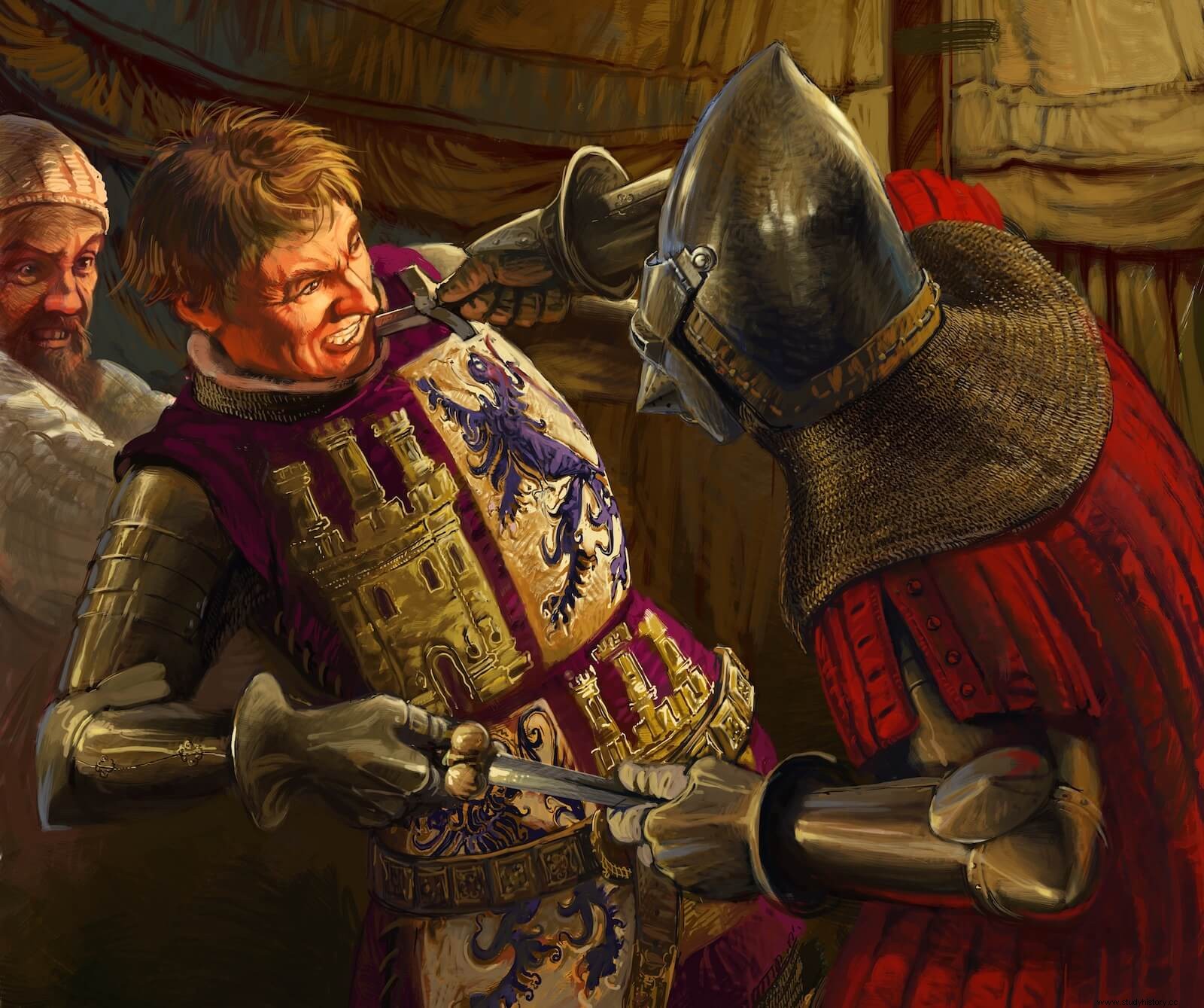
In principle, the First Castilian Civil War was not very different from the paradigm of medieval warfare as it had been known until then, where the main war actions consisted, beyond the occasional pitched battles, in the deep rides on enemy lands and in the siege of different strong points, whether they were castles, cities or walled towns. But what will make it special, mainly in the final years of the conflict, will be the implementation of a whole set of strategies and resources that will take both contenders to the limit of their possibilities, both in men and in administration, depleting their resources. , pushing them into raids and scorched earth, and concentrating thousands of fighters and siege machines in the main disputed squares.
Traditionally, this war episode, as Professor Julio Valdeón proposed in his day, has been divided into three large chronological periods, with different phases, which we believe it is convenient to keep for analysis of the topic at hand. The first would go from the year 1350 to 1356, a stage in which the first nobility rebellions took place. against the monarch and in which several sieges follow one another, of variable proportions, as is the case of the siege of Segura de La Sierra (1354), that of Toledo (1355) or that of Toro (1355). The second moment falls between the years 1356 and 1366, in the so-called War of the Two Pedros, phase in which the Aragonese and Castilian crowns settle their differences, with a significant participation of the rebellious nobility opposed to Pedro I, carrying out a whole series of war episodes, both maritime and land, in which the siege war had a fundamental role. Finally, the period considered to be the First Castilian Civil War properly speaking, between 1366 and 1369, when after the resounding Petrista victory in the battle of Nájera (1367) and the subsequent defection of the Black Prince, the balance was definitively turned in favor of the Trastámara side that, conquest after conquest, finally managed to defeat Pedro I in the battle of Montiel and after the corresponding siege of his town and fortress, it ends with the regicide perpetrated at the foot of the castle of La Estrella (March 23, 1369).
Several acts of arms that actually occurred throughout the years that the struggle between Pedro I and Enrique de Trastámara lasted, will serve to illustrate the siege operations of this moment, actions that became fundamental in the theater of operations of the fratricidal struggle. In this dynamic, in line with what was taking place in other military conflicts of the time, as Professor Francisco García Fitz has studied, the pitched battle was a truly exceptional resource and, except for the case of Montiel, its results were never they were decisive, at least in the long run. The usual way of waging war in the autumn of the Middle Ages was, as in past times, the cavalcade, the wear (psychological and material) and the siege and the companies of eviction of towns and castles. Frequently the latter carried parallel actions of various kinds that, in some cases, became authentic special operations worthy of being fictionalized. In addition, the gradual transformation of the armies, with increasingly solid logistical and economic bases, allowed the sieges of cities and castles to be carried out for an extended period of time. An example of this war of positions, where it was at stake to take or defend strategic places, were two episodes that had as their epicenter the city of Toledo, a royal city and a central bastion on the operations table in which the kingdom of Castile had become. in the central years of the fourteenth century.
The dispute over Toledo and the battle of the San Martín bridge (1355)
In the month of January of the year 1355 the legate of Pope Innocent IV excommunicated King Pedro I in the city of Toledo, pronouncing the interdict of his kingdom from the same primatial cathedral, a symbol of permanence and dynastic legitimacy that was connected with nothing more and nothing less than the ancient lineage of the Gothic kings. The causes that had led to this situation were varied, but the main reason given by the prelate was the rejection and confinement of Queen Doña Blanca a few days after her wedding with the monarch. This fact gave the rebels and their supporters a legitimate cause of great moral value that connected them with the people in the face of the drama suffered by the "outraged queen". In the heat of these events, a revolt began throughout the city that ended with the fortress being occupied by troops related to the Count of Trastámara, which was a major coup. However, with the passage of time, the situation of the rebels became precarious, especially due to the advances that the Petristas were achieving throughout the territory, recovering fortresses and cities, and achieving the return of part of the nobility to the side. realistic. In this context, the next great military objective for King Pedro was to recover the city of Toledo , banner of the rebels.
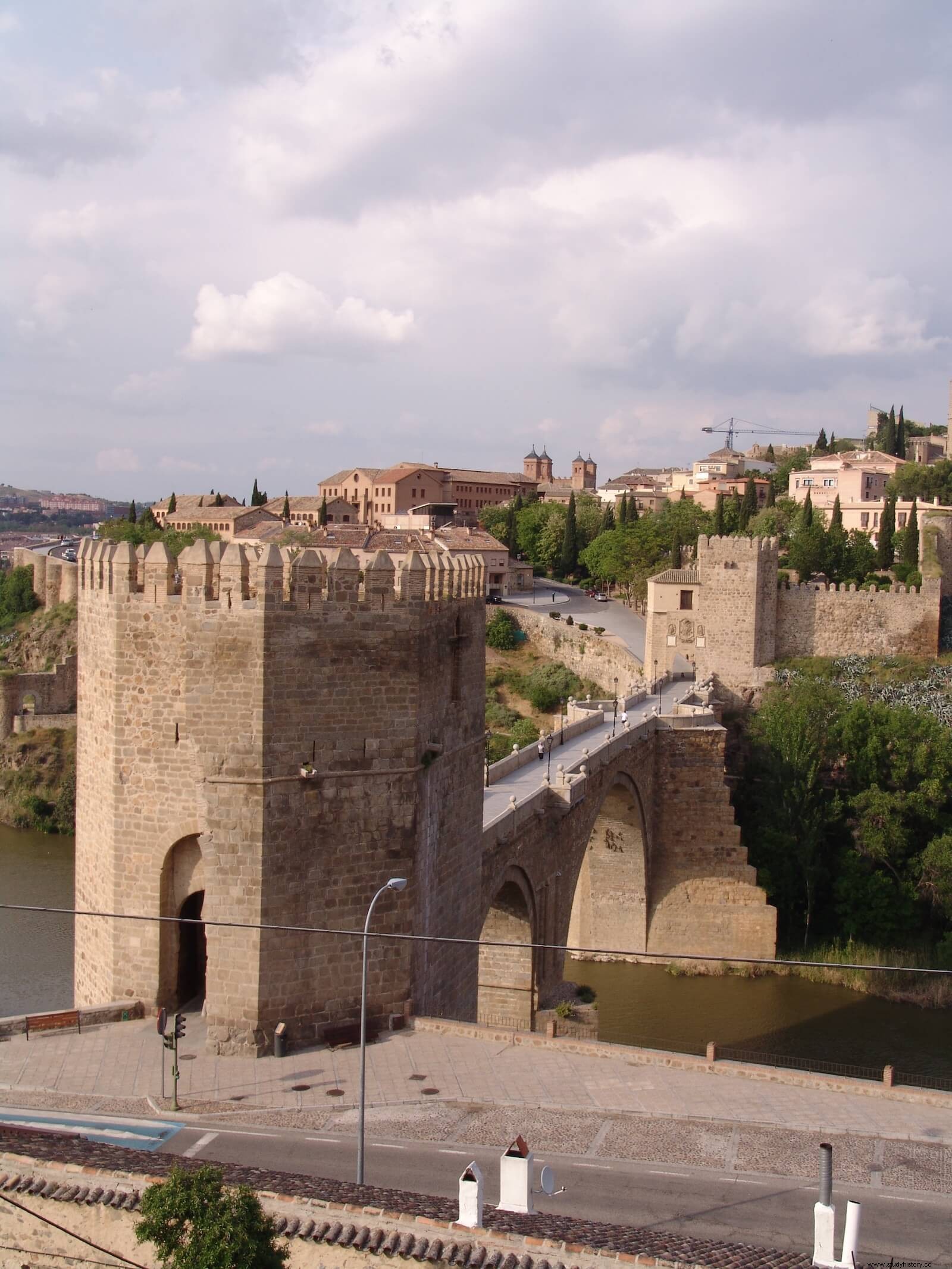
Aware of the panorama that was already looming, in the In the spring of 1355, a race against time began for both contenders to reach the city of Toledo as soon as possible with a retinue strong enough to consolidate the position, in the case of the rebels, or to recover the plaza, in the case of the rebels. realistic. Enrique, who was awaited by his brother and master of the Order of Santiago in the city of Talavera, quickly headed south, for which he had to cross the Sierra de Gredos through the Pico pass. For his part, King Pedro had secretly mobilized troops from the land of Segovia and Ávila, leaving the militias of Colmenar guarding and protecting this key point, where they prepared an ambush. Those from the "land", as the chronicles refer to them, let the rebel troops slowly enter the port, which was a difficult passage and was full of weeds and stones, aware that this scenario would play in your favor.
When a large part of the militia began to descend and glimpsed the lands of the Tiétar valley , the Colmenares, as well as some reinforcements that had been arriving, fell on her from several flanks. This surprising move allowed not only to cut off the advance but also the withdrawal of the rebels, killing many who remained trapped in rough and intricate terrain. Among them, some illustrious character would lose his life, in the case of Hernán Sánchez Manuel, called el Mozo, son of Don Sancho Manuel, lord of the Infantado and Escalona and major advance of the kingdom of Murcia. Seeing how complicated the situation was, Count Enrique made a desperate move, trying to get out of the way and reach a high point where he could defend himself, after which he managed, not without effort, to run away towards the town of Talavera, leaving behind the way a large part of his hosts, something that he would not easily forget. Indeed, days later, supported by the Santiago troops of his brother Fadrique, master of the Order of Santiago, he completely razed the place of Colmenar de Ávila in revenge for the defeat suffered.
For his part, Pedro I, knowing that he had not been able to capture his half-brother, crossed the passes through the port of Tablada and arranged his base of operations to await news from Toledo. With the arrival of the king, his supporters began a propaganda campaign throughout the city in order to undermine the positions behind the scenes and achieve an internal uprising that would facilitate access through one of the gates. The combined forces of Enrique and Fadrique, who knew of these movements in the city, advanced with a large armed contingent, among which were some retinues of the military orders, and arrived at the San Martín bridge on May 2; however, various Petrista flagmen who had made themselves strong in this place prevented them from entering. Faced with this situation, they set up their camp in the Huerta del Rey, next to the Tagus, until a day later, a subterfuge operation by their followers inside the city allowed them to control the door that led to the Alcántara bridge and little later, they managed to penetrate through it.
During the following days there were significant outrages against those loyal to the king and, especially, against the Jewish population. In this sense, as the chancellor of Ayala, the main chronicler of these acts of arms, tells us, a great massacre of Jews was carried out and the main Jewish quarter was besieged, which had a defensive fence and a castle. The cruelty against this minority was not surprising, since the trastámara propaganda accused King Pedro of being a friend of them, but the reasons were possibly other and deeper. The Jewish quarter of Toledo it was one of the most important in the kingdom and had great economic power, something that the monarch had been benefiting from to finance much of the war effort. The attacks against the walls of the Jewish quarter were constant but unsuccessful, well defended by its inhabitants, who had been joined by some royalist troops who knew of the sad fate that awaited them if the besiegers managed to enter. Faced with this situation, they began little by little to carry out eviction work. In several days, small breaches had already been opened in the wall, creating some butrons in which they fought fiercely for control, which presaged a fatal outcome for their defenders.
But the royal troops, increasingly numerous thanks to reinforcements from the rear, had already begun their advance and on May 8 they were in front of the walls of Toledo, with a contingent of nearly three thousand horsemen. The place chosen to try to enter the city and where the main attack would be concentrated was the San Martín bridge , since it was the closest point to the Jewish quarter. The war plan, in which the king's private Juan Fernández de Henestrosa, a military genius of the time, must have had a lot to do, had two aspects that took advantage of the numerical superiority against the defenders. In the first place, they launched an attack against the bridge, whose main objective was to set fire to the gates to concentrate the greatest number of Trastámara troops at this point. When the rebels fell for the trap, the second part of the plan began, which we could consider a true coup. For this, three hundred men-at-arms experienced in special operations were chosen, who began to cross the river by the weirs of the Tagus, which were not very large at that time, guided by some hemp ropes that those from the Jewish quarter had placed across the width of the riverbed to avoid that the current dragged the soldiers with their equipment. Once, safe and sound, they reached the foot of the Jewish quarter wall, they were able to climb up to it thanks to the ropes thrown at them by those who were there.
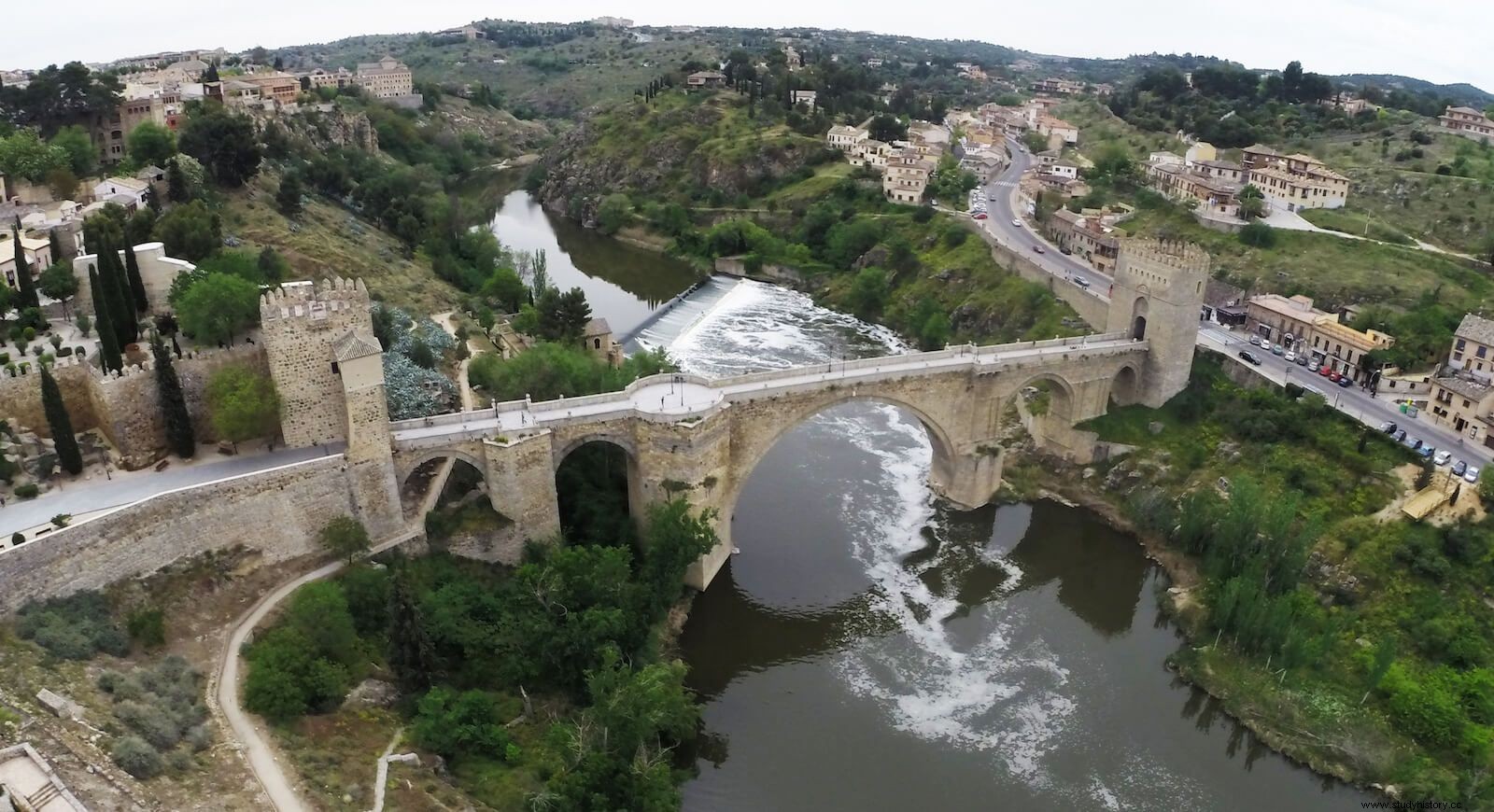
From here a second front was opened in the struggle to break the resistance of the bridge's defenders, who were barely holding out against the continuous volleys of the crossbowmen, which turned the place, together with the flames that were already spreading through the entrance tower, into a real inferno. However, the Santiago militias, among others, commanded by the commander of Montiel Pedro Ruiz de Sandoval, heroically resisted the attack, although finally the smoke, the arrows and the lack of parapet and battlements in the crowning of the tower, they made them retreat. The situation thus became desperate, so the Enriquena heavy cavalry under the command of the count himself, his brother Fadrique and the master of the Order of Calatrava, among others, with numerous troops (about eight hundred on horseback), left from Toledo via the Alcántara bridge in order to attack those who continued to cross the river and surprise those who assaulted the San Martín bridge from the rear. However, when they were close to reaching their objective, the gates of the San Martín bridge gave way due to fire and a strong contingent of Petrista troops under the command of the king himself managed to penetrate the city. The following moments, as used to happen in medieval sieges when a breach was opened in a wall, were a bloodletting that ended the little Trastámara resistance that still remained in the city. King Pedro made his way to the Toledo fortress, which had been the main enemy stronghold in the city and where his wife, Queen Doña Blanca, was, whom he ordered to lock up in the Sigüenza castle. For his part, Enrique, with the remains of his army, looted the mules and other baggage of the Petristas that had been left out and headed for Talavera to later return to the city of Toro, which he still had in his hands. .
The great siege of Toledo and the battle of Montiel (1368-1369)
The second episode that we are going to deal with occurs in the final moments of the conflict, since Enrique, recovered from the defeat at Nájera in 1367 at the hands of the combined Anglo-Castilian troops, he returned from his second exile on French soil. During his stay abroad, despite all the setbacks, the Count of Trastámara had known how to play his cards very well, preparing the ground for his return. Through clever political and diplomatic maneuvers, not without promises, favors and bribes, a large part of the nobility and the Castilian cities were on his side, so everything was prepared for a new invasion. In this case, as happened in 1366, after passing through Calahorra, the first objective was the city of Burgos, where he had solemnly crowned himself king a year earlier. After entering the city without problems, the troops from Enrique encountered great resistance in the Jewish quarter and in the castle, developing a very violent siege that finally ended with the surrender of the fortress.
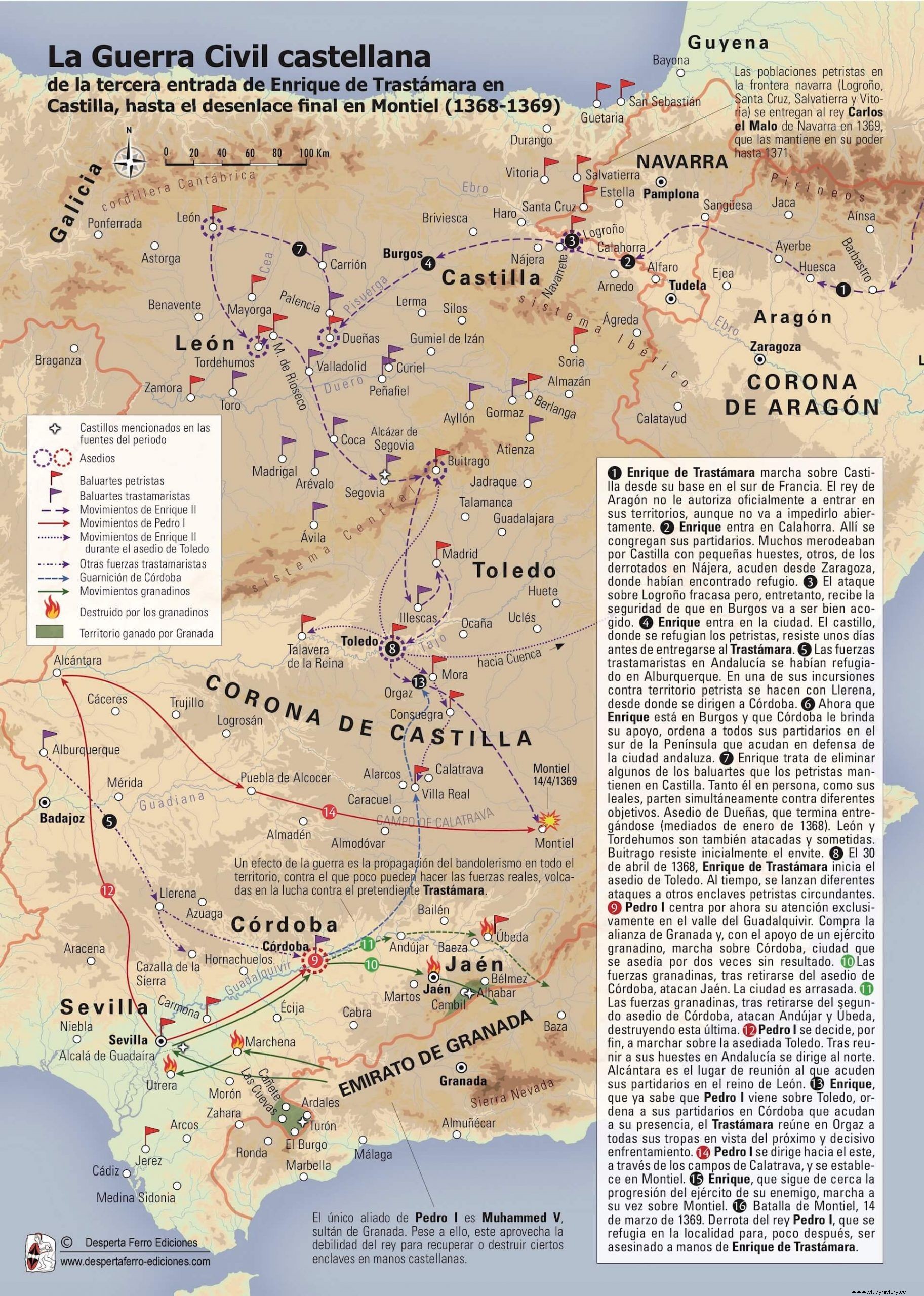
Meanwhile, King Peter had grown strong in Andalusia, specifically in its Carmona fortress , where he had concentrated his family and gathered his treasure in order to prepare for the future confrontation with his half-brother. From then on, the foundations began to be laid for what should be one of the main objectives of the war, the conquest of Toledo, now a Petrista city that was considered a fundamental piece in the territorial strategy of both contenders. To do this, Enrique had sent a large part of his troops ahead of him with his wife Juana and his eldest son, Juan, who were obtaining victory after victory in their advance towards the south. First, they put a fence around the Castillo de Dueñas (Palencia), a key fortress on the way to Valladolid, where they showed their power by deploying numerous trebuchets until they managed to surrender the enclave. When he arrived in Buitrago, his forces had already managed to hand over the city, a case similar to what happened in Madrid. In parallel, part of his retinue had been touring the Tagus valley and the towns near Toledo, in order to eliminate the resistance of the foci loyal to the king and clear the way. After making his advice in the town of Illescas, he decided to start the siege of the city of Toledo , company that was presumed hard and prolonged. In this way, on April 30, 1368, the pavilion of the self-proclaimed monarch with more than a thousand men-at-arms was planted at the gates of Toledo, in the Vega Baja area, and the work of the siege began.
At first, contingents were sent to close all possible accesses to the city, especially the bridges that had been decisive years ago and would be so again in the coming months. following. In addition, special care was taken to cut off food and water supply points to the city. From here, the work of the specialized corps began, such as artillerymen, carpenters and workers, who had joined the army corps and who were going to play a leading role in the siege. Indeed, the artillery devices had played an unusual role since the conquest of Burgos, since they sowed terror in the defenders and had been effective in breaking through the weak points of the fortresses. On the other hand, the carpenters began work to build bastides and a wooden bridge.
Over the following months attacks and counter-attacks alternated, generally unsuccessful, with the destruction of several bastides built for the assault on the walls. However, the passage of time took its toll on the defenders of the city and, furthermore, the fifth column of the Enriquen side, which must have still been numerous inside the city, led to several altercations between the two factions, such as, for example, the events that occurred in the Tower of the Abbots . At this point, located on the northern front, facing the fertile plain, a secret action had been prepared for their assault. From here on, the tower was to serve as an access point for a group that later had the mission of opening one of the city's entrances. The action began when a group of followers of the Trastámara, after reducing the guard, became strong inside the tower and launched proclamations:"Castilla for King Enrique!" located in the nearby real, they will start the assault at this point. The movement was very fast and the attackers placed ladders to climb up to the tower but, when the first soldiers were entering, about forty according to the chronicles, the defenders had begun the struggle to recover this strong point. Unable to access it, they began to carry flammable materials, which they deposited next to the tower, after which they set it on fire and forced the attackers to flee, again, through the stairs.
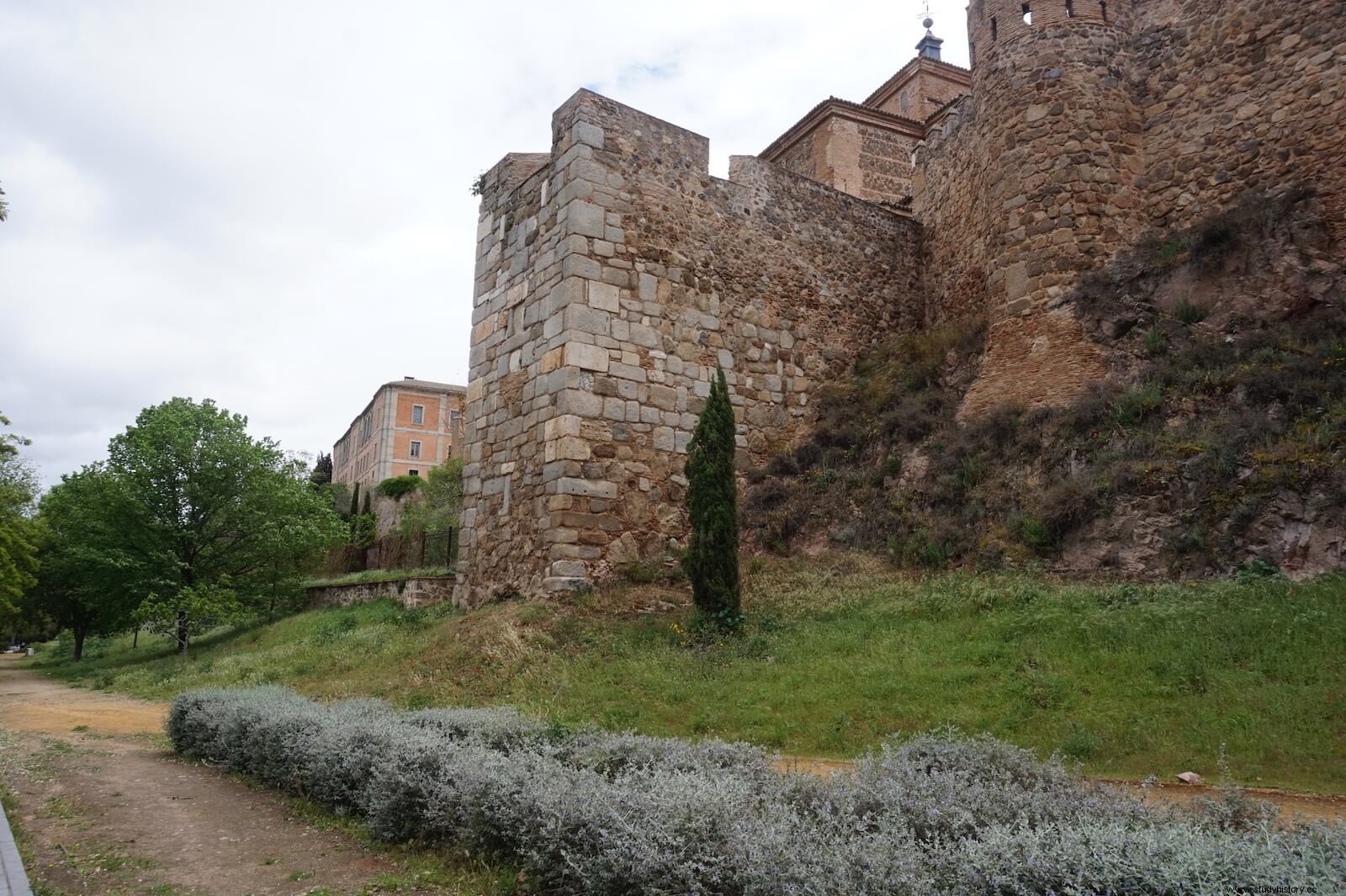
In parallel to these actions, the main point of attack, as the petristas already did in 1355, was the tower that defended the access to the bridge of San Martín. At this point, groups of sappers were working on a mine to demolish it, although the action was very difficult due to the constant departures of the defenders, to which the attackers responded by firing balls from the blunderbusses installed nearby. However, seeing the progress of the mines, the Petristas tried to disable the bridge by destroying an arch, while building an internal wall of rammed earth, on the other side of the bridge, to close the access in the event of a possible fall of the tower. . Faced with this situation, in the month of December 1368, the assailants rushed into the mining work, digging and shoring without rest, until days later everything seemed ready for the coup de grâce to Toledo.
The assault was prepared to be executed at dawn. The troops from Enrique gathered around the tower while the work of the artillerymen intensified, beating the defenders with large stones, who were already aware of the danger that hung over them. From here, events took a dramatic turn. It all started with the burning of the props of the mine that, finally, was not enough for the tower to collapse. Given this and thinking of a brave assault, the besieged reacted with great haste completing their work of intentional demolition of the bridge , under heavy volleys of stones from the enemy, until one of the arches broke and fell completely. With the collapse of this great structure, bitterly described by the chronicler Pedro López de Ayala, the fence came to an apparent standstill.
For his part, Pedro I was well informed of the fate of the Toledo defenders and how soon the city would fall if he did not lend himself to lifting the siege. From his Sevillian bases he had intensified his actions to gather an army with which to restore the status quo , while, together with their Nasrid allies, they carried out attacks against the main Trastámara enclaves in the Andalusian zone, mainly in Córdoba. In the month of March 1369, with a retinue of a certain entity, the Petristas ascended towards the lands of Badajoz and after passing through Puebla de Alcocer, they crossed the Campo de Calatrava towards the city of Alcaraz, with the ultimate goal of gathering a army powerful enough to lift the siege of Toledo. On March 13, 1369 Pedro I arrived at the villa de Montiel and he prepared to spend the night in the castle of La Estrella, dispersing the troops through the surrounding villages so that they could get supplies. 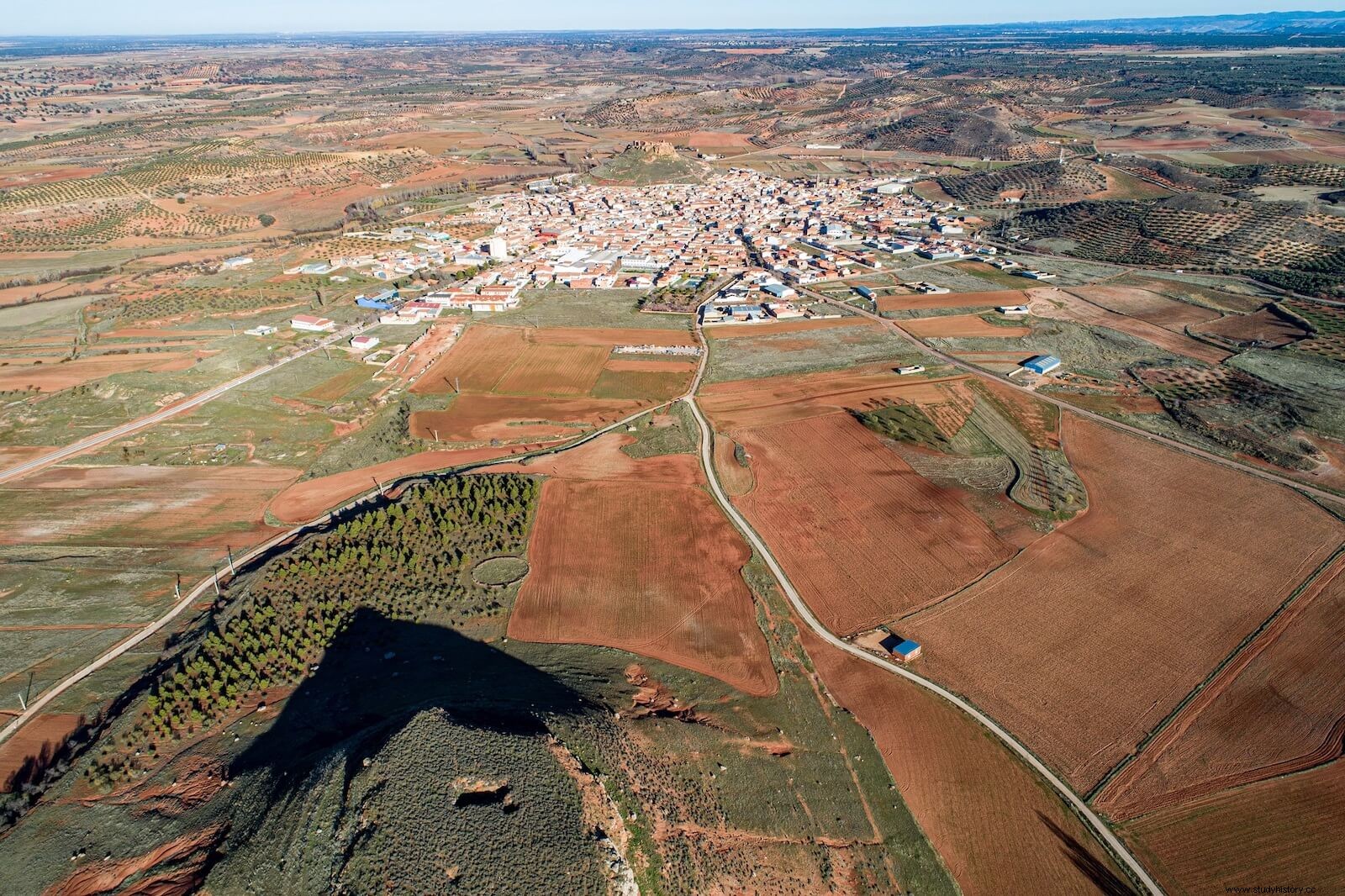
Meanwhile, the spies of the Henry side, who They were numerous in Villa Real (today Ciudad Real) and other places in the South, keeping Enrique Trastámara conveniently informed of his half-brother's movements. At this juncture, days before, in a risky decision that would ultimately prove decisive, he decided to gather his advice and march to meet the enemy. Direct confrontation was sought, aware as it was of the weakness of the Castilian monarch and the favor of the surprise effect. After leaving a sufficient contingent to continue the siege of Toledo under the command of the archbishop of the city, he led the best of his army, and after a frantic ride across the fields of La Mancha, he reached the outskirts of the town of Montiel on the night of March 13 to 14, 1369.
Explaining the events that occurred from this moment far exceeds the purpose of this text, so we will make a brief approach to them (see a complete analysis in “El end of a reign (1367-1369). The marked destinies” in Desperta Ferro Antigua y medieval #44). In the early hours of the 14th, an advance guard of Petrista troops that had left the castle of Montiel to survey the land, fell back to Montiel, announcing the arrival of the Trastámara army. Pedro, surprised and with his troops scattered around, rushed to do battle. He barely managed to form a line with peons and the Nasrid cavalry as auxiliary troops, leaving the castle of Montiel behind him. At the head of the enriqueños came the heavy cavalry formed by the military orders of Santiago and Calatrava , as well as the mercenaries of the French White Companies, who, after giving their mounts a brief rest, carried out a charge in which several hundred horsemen participated. The clash must have been brutal, but King Pedro resisted at the head of his men until Enrique, with what was left of his army, carried out an encircling maneuver and crossed the fords of the Jabalón River to attack on the north flank. From here the petrista line was broken and the withdrawal began. The king took refuge in the castle of Montiel, which he barely reached, while the Nasrid troops fled in disarray to the south.
In the following days the siege of the castle was carried out, building a wall around it to prevent the possible escape of King Pedro. We know that there was some attempted assault or at least skirmishes in front of the town wall, as evidenced by the crossbow bolts found in the archaeological excavations of the place and the mentions of the Genoese crossbowmen that are cited in the sources of the time. Finally King Pedro, desperate, tried to flee in the early hours of March 23, but was tricked into a store where his half-brother was waiting for him. When they both recognized each other, they engaged in a merciless fight in which finally, Pedro I, held from behind by the Frenchman Bertrand Duguesclin, received several stab wounds at the hands of his own brother, Enrique II, consummating the regicide and the definitive change of dynasty in the crown of Castile.
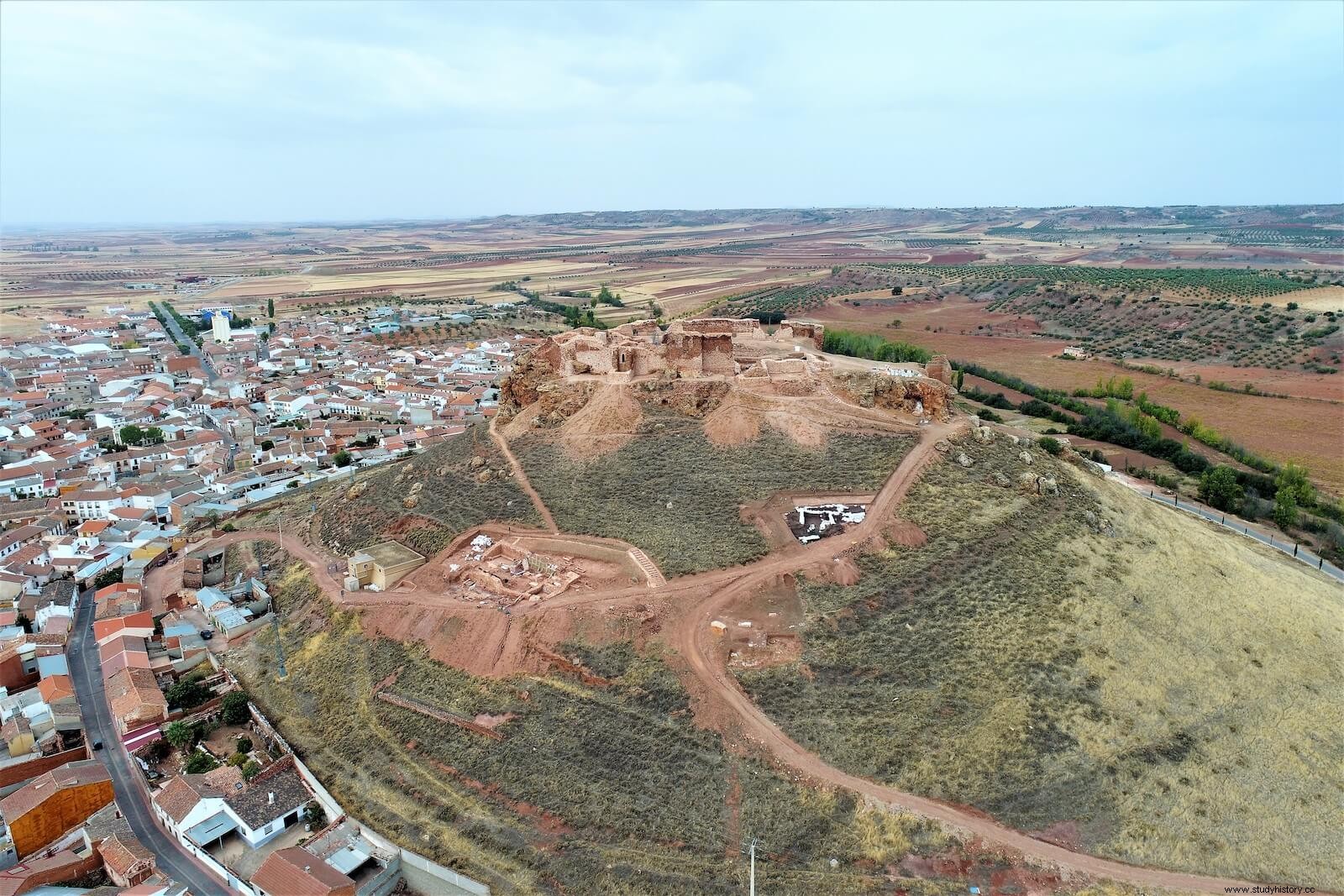
Meanwhile, Toledo was still surrounded and enduring a great famine after almost a year of siege. With the news from Montiel, morale plummeted and made the royalists understand that all was lost. For this reason, and despite the fact that some Petristas had gathered in Carmona to desperately continue their side's fight against the Trastámara house, the gates of the city were definitively opened to the troops from Enrique. Days later a great repression began in which, again, the Jews got the worst of it, having to pay a large sum of money and many of them even ended up being sold as slaves.
Conclusions
The so-called First Castilian Civil War was a conflict that developed under the classic paradigms that had marked the medieval war episodes in the Peninsula. The pitched battles, except for the aforementioned episode of Montiel, were few and inconclusive in the long term, as occurred with the two battles of Nájera (1360 and 1367) and the battle of Araviana (1359), while the war of attrition and the sieges and conquests of the strongholds were what gradually marked the future of the conflict. In this sense, both sides had to put into operation important resources to be able to prolong the sieges over time and have a whole set of tools to break the enemy, even counting on the assistance of foreign troops, which meant a considerable economic loss ( see "Freeing the Dogs of War. Foreign Mercenaries and Great Companies" in Desperta Ferro Antigua y Medieval #44).
However, war then, as it will be in times to come, cannot be based on a single type of action, but rather the skillful combination of diplomacy, strategy, tactical and logistical support , will become fundamental to decide the victory for one or the other side. The benefit that Enrique knew how to derive from his victories, the skillful diplomatic policy, the propaganda and counterpropaganda work against King Pedro, discrediting him and instilling hoaxes about his legitimacy, espionage, and, as we have seen in this text, sieges and special operations , were undoubtedly actions, which together, had a positive result for the interests of the candidate for the throne and were decisive in the future of the war.
Primary sources
Pedro López de Ayala, Chronicles . Buenos Aires:Secret, 1997.
Jean Froissart, Chronicles. Madrid:Siruela, 2000.
Gutierre Diaz de Games, El Victorial . Salamanca:Editions of the University of Salamanca, 1997.
Bibliography
- García Fitz, F. (2007):“Daily wars in 14th century Castile”, Middle Ages . History Magazine , 8, p. 145-181.
- García Fitz, F. (2019):“Uses of war and military organization in the fourteenth century Castile”. Memory and Civilization , 22, pp.117-142.
- Rojas Gabriel, M. (1997):“New techniques, old ideas? Military, pyroballistic revolution and Castilian castral eviction operations in the wars against Granada (c.1325-c.1410)”. Meridies, IV, p. 31-56.
- Valdeón Baruque, J. (1966):Enrique II. 1369-1379. Palencia, La Olmeda
- Valdeón Baruque, J. (2002):Pedro I el Cruel and Enrique de Trastámara, the first Spanish civil war? Madrid, Aguilar.
- VV.AA. (2017):Ancient and Medieval Ferro Awakens #44:Peter I the Cruel.
